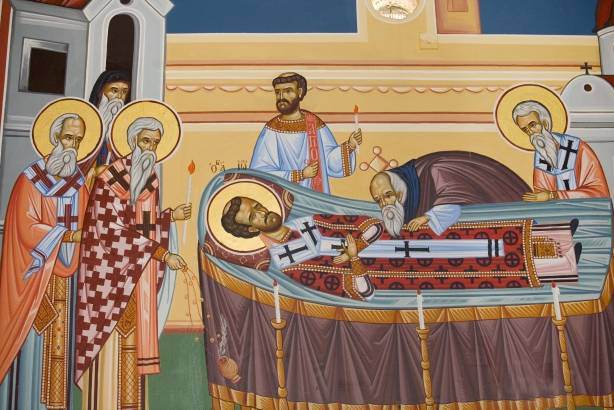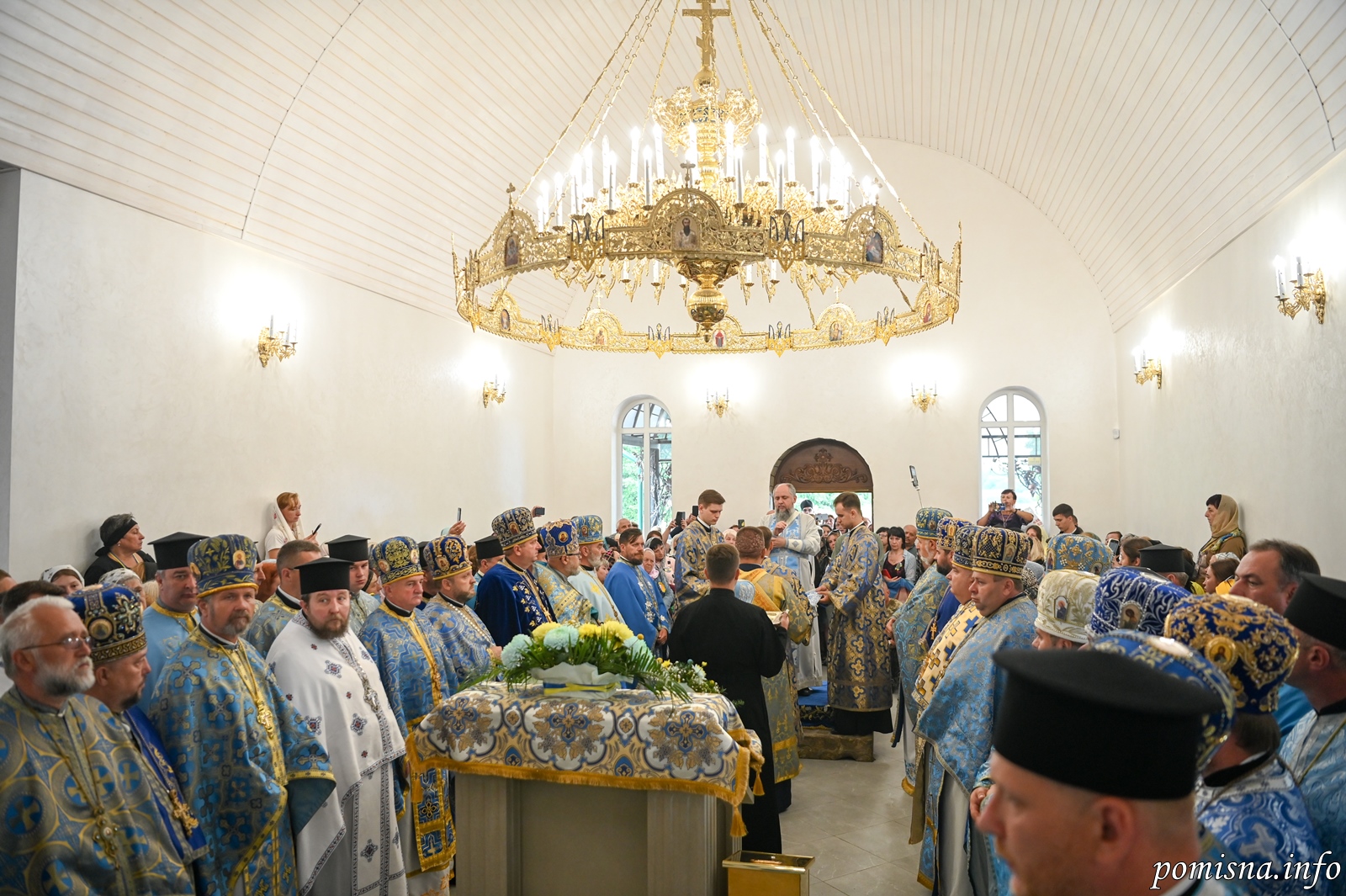Translation of the relics of Saint John Chrysostom, Archbishop of Constantinople (27 January)


Saint John Chrysostom, the great ecumenical teacher and hierarch, died in the city of Comana in the year 407 on his way to a place of exile. He had been condemned by the intrigues of the empress Eudoxia because of his daring denunciation of the vices of those ruling over Constantinople. The transfer of his venerable relics was made in the year 438, thirty years after the death of the saint, during the reign of Eudoxia’s son emperor Theodosius II (408-450).
Saint John Chrysostom had the warm love and deep respect of the people, and grief over his untimely death lived on in the hearts of Christians. Saint John’s disciple, Saint Proclus, Patriarch of Constantinople (434-447), during services in the Church of Hagia Sophia, preached a sermon praising Saint John. He said, “O John, your life was filled with sorrow, but your death was glorious. Your grave is blessed and reward is great, by the grace and mercy of our Lord Jesus Christ O graced one, having conquered the bounds of time and place! Love has conquered space, unforgetting memory has annihilated the limits, and place does not hinder the miracles of the saint.”
Those who were present in church, deeply touched by the words of Saint Proclus, did not allow him even to finish his sermon. With one accord they began to entreat the Patriarch to intercede with the emperor, so that the relics of Saint John might be brought back to Constantinople.
The emperor, overwhelmed by Saint Proclus, gave his consent and gave the order to transfer the relics of Saint John. But those he sent were unable to lift the holy relics until the emperor realized that he had sent men to take the saint’s relics from Comana with an edict, instead of with a prayer. He wrote a letter to Saint John, humbly asking him to forgive his audacity, and to return to Constantinople. After the message was read at the grave of Saint John, they easily took up the relics, carried them onto a ship and arrived at Constantinople.
The coffin with the relics was placed in the Church of Holy Peace (Hagia Eirene). When Patriarch Proclus opened the coffin, the body of Saint John was found to be incorrupt. The emperor approached the coffin with tears, asking forgiveness for his mother, who had banished Saint John. All day and night people did not leave the coffin.
In the morning the coffin was brought to the Church of the Holy Apostles. The people cried out, “Father, take up your throne.” Then Patriarch Proclus and the clergy standing by the relics saw Saint John open his mouth and say, “Peace be to all.” Many of the sick were healed at his tomb.
The celebration of the transfer of the relics of Saint John Chrysostom was established in the ninth century.
This event took place on this day in the year 438, when Saint Theodosius the Younger had been Emperor for thirty years; he was the son of Arcadius, and Eudoxia, who had exiled Saint John. The Archbishop of Constantinople at that time was Proclus, who had been the Saint’s disciple (see Nov. 13 and Nov. 20).
The memory of this luminary of the Church is celebrated on November 13 and January 30, but on this date the Church celebrates the translation of his honorable relics from the Georgian village of Comana, where he had reposed in exile, to Constantinople, where he had previously governed the Church. Thirty years after the death of St. John, Patriarch Proclus delivered a homily in memory of his spiritual father and teacher. He so inflamed the love of the people and the emperor, Theodosius the Younger, toward this great saint, that all of them desired that Chrysostom’s relics be translated to Constantinople.
It was said that the sarcophagus containing the relics of St. John Chrysostom did not allow itself to be moved from its resting place until the emperor wrote a letter to Chrysostom begging him for forgiveness (for Theodosius’ mother, Eudoxia, was responsible for the banishment of this saint) and appealing to him to come to Constantinople, his former residence. When this letter of repentance was placed on the sarcophagus, its weight became extremely light. At the time of the translation of his relics, many of the sick who touched the sarcophagus were healed.
When the relics arrived in the capital, the emperor, in the name of his mother–as though she herself was speaking over the relics–again prayed to the saint for forgiveness: “While I lived in this transient life, I did you ill; and now, when you are living the immortal life, be of aid to my soul. My glory passed away and did not help me at all. Help me, Father; in your glory, help me before I am condemned at the Judgment of Christ!” When the saint was brought into the Church of the Twelve Apostles and placed on the patriarchal throne, the masses of people heard from St. John Chrysostom’s mouth the words: “Peace be unto all.” The translation of the relics of St. John Chrysostom took place in the year 438 A.D.
Apolytikion of Relics of John Chrysostom
Plagal of the Fourth Tone
The grace of your words illuminated the universe like a shining beacon. It amassed treasures of munificence in the world. It demonstrated the greatness of humility, teaching us by your own words; therefore, O Father John Chrysostom, intercede to Christ the Logos for the salvation of our souls.
Kontakion of Relics of John Chrysostom
First Tone
The holy and august Church is mystically gladdened today on the translation of thy holy relics. And though she had kept them hid in concealment like precious gold, by thine intercessions she unceasingly granteth, unto them that praise thee, the divine grace of healing, O Father John Chrysostom.
Source: oca.org / goarch.org / westserbdio.org




